Net Zero Carbon Reduction Plan
Last Updated On: 1st April 2024
Effective Date: 1st April 2024
Reducing carbon emissions is a key priority for our hospital and our organisation overall. Our carbon reduction plan is a roadmap detailing how our organisation intends to reduce its carbon emissions.
With that in mind, we’ve set out an environmental sustainability strategy and a target of being a net zero business for scope 1 and 2 and 3 emissions. In the short term, Nouvita Healthcare is pursuing a plan to reduce its Scope 1 and 2 emissions by 2035 and to extend this to develop our understanding of scope 3 emissions.
For transparency, whilst we are not large enough to report under SECR or ESOS, that said we have developed a comprehensive plan to minimise our environmental impact while continuing to provide exceptional care.
Scope 1 emissions are direct greenhouse gas emissions that occur from sources that are controlled or owned by the reporting organisation, e.g. emissions associated with fuel combustion in boilers, furnaces, vehicles.
Scope 2 emissions are indirect greenhouse gas emissions associated with the purchase of electricity, steam, heat, or cooling. They are accounted for by the reporting organisation as they are a result of the organisation’s energy use.
Scope 3 emissions include all sources not within an organisation’s scope 1 and 2 boundary. Scope 3 emissions often represent the majority of an organisation’s total greenhouse gas emissions.
Baseline Assessment
Our baseline assessment measures the current carbon footprint at the hospital and identifies the main sources of emissions.
Please note, this is for Baldock Manor Hospital only:
Baseline Year: 2022
Additional Details relating to the Baseline Emissions calculations.
While have been measuring emissions for scope 1 and scope 2 since 2021, for 2024 onwards, we will begin to incorporate scope 3. As such, our baseline data currently only includes scope 1 and 2 emissions
Baseline year emissions:
Scope 1: 72.5 tCO2e
Scope 2: 18.3 tCO2e
Scope 3: TBC (including upstream and downstream transportation, waste from operations, employee commuting, business travel, and emissions from fuel sources)
TOTAL EMISSIONS: Scope 1 and scope 2 only = 90.8 tCO2e
Our Current Emissions:
Scope 1: 69.2 tCO2e
Scope 2: 18.2 tCO2e
Scope 3: TBC (including upstream and downstream transportation, waste from operations, employee commuting, business travel, and emissions from fuel sources)
TOTAL EMISSIONS: Scope 1 and scope 2 only = 87.4 tCO2e
Our emissions reduction targets:
• We project that scope 1 and 2 carbon emissions will decrease over the next five years to 43.5 tCO2e by 2030. This is a reduction of 50%
• The NHS have set a Net Zero Carbon Date for 2045 and suppliers are obligated to follow the same
• We are committed to net zero for scope 1 and 2 emissions by 2035, and for scope 3 by 2045
• Source greater than 50% of electricity from renewable sources by 2025
Completed Carbon Reduction Initiatives:
The following environmental management measures and projects have been completed or implemented since the 2022 baseline. The carbon emission reduction achieved by these schemes equate to 3.8 tCO2e, a 5% reduction against the 2022 baseline.
The summary below outlines our strategies to reduce carbon emissions:
1. Energy Efficiency Improvements:
• Facilities Upgrades: We are investing in energy-efficient building upgrades where we can – this includes improving insulation, replacing older glazed windows, and replacing lighting with energy-efficient lighting (LEDs). When constructing and/or renovating, we now look to optimise buildings energy efficiencies and use of natural light. These upgrades will reduce the overall energy consumption across all of our services.
• Renewable Energy Opportunities: We are exploring the installation of renewable energy sources such as solar panels on our hospital buildings to generate cleaner energy and reduce reliance on traditional fossil fuels.
• Energy Efficiency Projects: We have recently completed a small energy efficiency project whereby we replaced our older lighting with LEDs. Where appropriate, we have also added lighting motion sensors (PIRs) in areas such as laundry, out buildings and storerooms. We believe this will reduce our energy consumption by >20%.
2. Sustainable Transportation:
• Public Transport Incentives: We encourage staff and visitors to use public transport, car sharing and cycling. At one of our services, we have for several years, reimbursed staff for travel costs if they use public transport to commute to work.
• Remote working: A move to remote working for some roles has resulted in reduction of company business travel and commuting.
3. Sustainable Procurement Practises:
• Sustainability and Procurement Policy: Our procurement policy was recently updated to prioritise suppliers who demonstrate strong sustainable/environmental practises. Where possible, we assess suppliers based on their carbon reduction initiatives, use of sustainable materials, and overall environmental impact. An example of this is in the procurement of our food.
• Local Sourcing: We aim to source products and services locally wherever possible to reduce transportation emissions and support the local economy, for example fresh produce is sourced from local growers.
• Low Carbon Products: A new initiative we intend to introduce in 2024 is the procurement of products with lower embedded carbon. This includes selecting medical supplies, furniture, and equipment made from sustainable, low-carbon materials, rather than purchasing on cost only.
• Electricity Procurement: Environmental Partnerships: In 2019, we partnered with Cool Earth (https://www.coolearth.org/), who tackle the root causes of deforestation, and protect vital carbon sinks.
4. Supplier Engagement:
• In 2022, we agreed to actively engage with suppliers to reduce waste and emissions, identify and work with suppliers who are focused on making “greener” products. We are working towards this in three main areas, but there is still work to be done.
(a) Waste Reduction and Recycling:
We are currently implementing recycling at the hospital (paper, plastics, non-hazardous medical waste, and organic waste). Staff are trained on waste segregation to maximise the amount we recycle. We work with one waste provider, who is committed to sustainability and working with us to on a “zero to landfill” pledge.
(b) Going Paperless with Technology: The introduction of our electronic patient record (EPR) system in 2018 has meant we’ve made great strides in keeping paperless records, thus reducing our use of paper. We run printing reports to establish the highest use of paper across all of our services and there is friendly competition between teams to move this to zero. We are conscious that manufacturing laptops and tablets is energy intensive. To cut carbon emissions, we are exploring options to improve their lifespan and implement processes for responsible disposal.
(c) Sustainability in Food: We introduced Apetito at our Nouvita services in 2020. Implementing a catering service such as Apetito helped us greatly in cost reduction, although initially mainly through the staff costs (chefs and kitchen assistant predominantly) and the reduction in time taken to cater for our patients. That said, the cost saving enabled us to invest in other areas of the hospital – most significantly increasing our staff ratio to time spent in activities and therapies, for example.
Further, Apetito are the leading food supplier in health and social care. As an organisation, they have signed up to the NHS Plastics pledge and in April 2021, committed to reducing single use plastic food containers, such as covers and lids. Their pledge extends to making all packaging 100% recyclable by 2025. They recognise that 60% of their emissions come from the ingredients in the food alone. As such, they are working with farms across the UK and Ireland to reduce the carbon footprint of foods such as beef (37% of Apetito’s ingredients carbon footprint) and lamb (13% of Apetito’s ingredients carbon footprint), as well as pea farmers.
We have supported this by reducing our red meat menu options per week (with support of our patients) and replaced with alternative protein options. This has been particularly successful on our female wards, where we have also reduced the amount of food waste generated each week.
5. Green Champions:
We have established a network of ‘Green Champions’ within our hospital, who promote sustainability initiatives and encourages eco-friendly practices among staff.
In the future we hope to implement further measures such as:
Electric and Hybrid Vehicles:
In the future, we would like our hospital vehicle fleet to move to electric and hybrid models to reduce emissions from transportation. In January 2024 we signed up to electric chargers at our head office and will look to roll this out to all services. We have also explored the electric vehicle scheme to add to our benefits package.
Declaration and Sign Off:
This Carbon Reduction Plan has been completed in accordance with PPN 06/21 and associated guidance and reporting standard for Carbon Reduction Plans.
Emissions have been reported and recorded in accordance with the published reporting standard for Carbon Reduction Plans and the GHG Reporting Protocol corporate standard and uses the appropriate Government emission conversion factors for greenhouse gas company reporting.
Scope 1 and Scope 2 emissions have been reported in accordance with SECR requirements, and the required subset of Scope 3 emissions have been reported in accordance with the published reporting standard for Carbon Reduction Plans and the Corporate Value Chain (Scope 3) Standard3.
This Carbon Reduction Plan has been reviewed and signed off by the board of directors (or equivalent management body).

